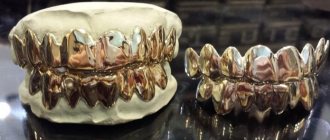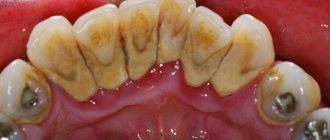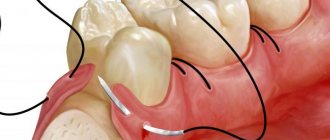What are tonsils?
Tonsils are lymph nodes located superficially in the oropharynx between the palatine arches. They represent an organ of immune defense against the threat of pathogenic microorganisms entering the lower respiratory tract, that is, an organ designed to purify the inhaled air from infection, or to localize this infection (take the fire upon itself) in order to prevent its spread below.
Healthy tonsils are formations permeated with “lacunae” and “crypts” (folds and passages), this is designed to greatly increase the surface of the working epithelium, which produces protective antibodies and immunoglobulins. That is, the intentions to have such a “multi-pass” structure are absolutely good. But, as you know, all our advantages are also our shortcomings. So in this case, if healthy tissue of the tonsil should self-clean, and lacunae (pockets) and crypts (passages) should not accumulate any contents, then the tonsil, exhausted from work, cannot cope with this function and accumulates desquamated epithelium in its “feeds”, and sometimes food remains in the form of whitish-yellowish masses, which are an excellent environment for the development of bacteria, as evidenced by the unpleasant odor from these accumulations.
Patients themselves notice that some content accumulates in the tonsils, either by determining this visually, or by the feeling of a foreign body on the right or left, “tingling” when swallowing, sometimes this discharge can be coughed up and spat out, or is discovered as an accidental finding when examining the throat by an otolaryngologist .
In this case, the tonsil no longer works as a protective organ and is rather a source of infection.
The magical properties of tanzanite
It is believed that tanzanite was found for a reason almost at the turn of the century and during the transition from one era to another. He acts as a spiritual guide. If you constantly wear jewelry with tanzanite, it helps to activate the hidden abilities of the body, allows you to understand the meaning of life and answer questions that have long worried all of humanity.
Also, there is an opinion that this stone can bring comfort and mutual understanding to the family. If one of the spouses is not sincere in his feelings, then his career will quickly decline, and unpleasant little things will happen to him constantly. Moreover, until he changes his attitude, the quantity and quality of unpleasant “surprises” will grow exponentially.
Advertising - Continued below
Why are tonsil plugs dangerous?
Such a process in the tonsils cannot be ignored; in some cases, the discharge in the lacunae is populated by hemolytic streptococcus , the antigenic structure of which is very similar to the antigenic structure of a number of tissues in our body, namely: cardiac muscle, kidney parenchyma, synovial bursa (articular tissue). Antibodies that the body diligently produces, unable to cope with the infection in the tonsils, can attack its own tissues, leading to rheumatic pathology: rheumatism, rheumatoid arthritis, etc. And these are only the most serious complications; most often, having such a lesion in the oropharynx, we feel it affecting our quality of life. Any hypothermia leads to inflammation of the tonsils of the back wall of the pharynx: sore throat, nasal congestion appear, otitis media, sinusitis, that is, an infection that has found refuge in the tonsils, appears when the opportunity arises and the body’s resistance decreases: hypothermia under air conditioning, during active recreation in the cold season, etc., it begins to actively reproduce and seed the mucous membranes with its pathogenic flora.
Vanishing tanzanite stone - the best investment
Tanzanite is a unique stone in every way.
Becoming the owner of even a small tanzanite is already an incredible success. Many experts believe that this stone, and not sapphires and rubies, is the best investment.
In my article I will tell you what is unique about this stone.
1. Perhaps the most surprising thing about tanzanite is its rarity. Diamonds are considered the rarest stones, but tanzanites are 1000 times rarer than diamonds, which are mined on almost all continents, with the exception of Antarctica.
The fact is that so far only one, relatively small deposit of tanzanite is known - on the Merelani plateau, near Kilimanjaro. One single section, a small strip 5-6 kilometers long
2. The number of stones is steadily falling. Experts believe that in another 20-25 years the vein will be completely depleted. They speak with caution about the prospects of finding more tanzanite deposits. Most likely, such a unique combination of conditions may simply never happen again.
3. While many precious stones have been known to people for thousands of years, the history of tanzanite is barely half a century old. It was discovered in 1967 by prospector Manuel de Souza, who was looking for rubies at the foot of Mount Kilimanjaro. At first the stone did not arouse any interest.
Perhaps tanzanite would have remained unknown if it had not caught the eye of Henry Plath, Tiffany's vice president. He was simply fascinated by this blue-violet stone. It is Tiffany who should be thanked for the “promotion” of this stone. The company's specialists spent a lot of time and effort to stir up interest in tanzanite. For example, a necklace with five large tanzanites was created especially for Elizabeth Taylor. The efforts were not in vain, and soon all bohemia wanted to have at least a small tanzanite stone. Accordingly, prices for this mineral have skyrocketed.
4. The most unique thing about tanzanite is its color. In general, in the jewelry world there are few precious stones that have a beautiful blue color, and in tanzanite it also has a complex shade that combines rich blue, lilac, violet and purple shades.
Triple coloring is a unique phenomenon in itself, but some crystals also exhibit an alexandrite effect: in daylight the stones are blue, and in artificial light they are violet. Tanzanites with a cat's eye effect are also found.
5. Deeply colored stones are most valued, but not all tanzanite mined has the desired blue-violet hue.
The color of the majority (about 95% ) of mined tanzanites is an unattractive yellow-brown. But they are successfully refined: a short heat treatment leads to a decrease in undesirable shades in the color of the stone and the appearance of beautiful shades of blue and purple in the stone. The secret of this color is simple: stones that have been lying under the scorching sun of Africa for some time are naturally dark blue in color, but those extracted from the depths of the earth require human intervention.
There are also paler tanzanites: pale blue, pinkish, lilac, sometimes almost translucent. And although they are much cheaper than brighter and more saturated stones, it is still tanzanite, which means it is a rare and valuable stone.
6. Since the discovery of tanzanite, its price has only grown, not counting a short period of time after the 2008 crisis, but now they continue to gain value. And of course, natural blue and violet-blue stones are more expensive than those that have undergone heat treatment.
At auctions, the starting price of the stone starts at $120 per carat (1 carat - 0.2 grams). There is no upper limit. Wealthy collectors who want to purchase it can pay very high prices. However, the final price is determined taking into account many factors, from size to sample shade.
Prices can be viewed in the table.
Weight in carats Low and medium quality stones in dollars Average and high quality in dollars
| Up to 0.29 | 10-15 | 40-110 |
| 0,3-0,99 | 10-15 | 60-100-400 |
| 1-2,99 | 65-180 | 200-550 |
| 3-9,99 | 225-300 | 300-600 |
| 10 or more | 300-500 | 420-650-1200 |
7. And, most importantly, tanzanite, with its unique optical effects, has not yet been learned to be grown artificially. Of course, there are fakes, but most of them are so clumsy that it is not difficult to recognize the deception. Thus, the unique triple stone is highly likely to be tanzanite
8. Medicinal properties of tanzanite . Traditional healers advise looking at this stone to relieve eye strain and get rid of headaches. Also, tanzanite can relieve the owner from colds and runny nose.
Some experts claim that if this stone is worn for a long time, it can cure any skin disease, including teenage acne, and also relieve back pain.
9. The magical properties of tanzanite. It is believed that tanzanite was found for a reason almost at the turn of the century and during the transition from one era to another. He acts as a spiritual guide. If you constantly wear jewelry with tanzanite, it helps to activate the hidden abilities of the body, allows you to understand the meaning of life and answer questions that have long worried all of humanity.
Also, there is an opinion that this stone can bring comfort and mutual understanding to the family.
10. Who is tanzanite suitable for? Tanzanite is suitable for a woman who wants to attract as much attention as possible from the opposite sex. Another category of people for whom this beautiful stone is intended are entrepreneurs and everyone who wants to improve their financial situation.
Astrologers have not yet given preference to any zodiac sign in wearing tanzanite. Therefore, anyone who owns jewelry with it will be happy and prosperous, since the stone will “take care” of this.
INTERESTING FACTS:
The most famous example of tanzanite “took” part in the filming of the 1997 film Titanic (J. Cameron) under the guise of the Heart of the Ocean diamond.
The most famous cut tanzanite in the world belongs to Michael Scott, the first CEO of Apple. The stone is part of the luxurious Queen of Kilimanjaro tiara, surrounded by over 900 diamonds. The weight of the blue crystal is 242 carats.
What to do in case of tonsil blockages?
Of course, see an otolaryngologist in a specialized ENT office; in Moscow, this can be done at ENT Clinic No. 1 , where you will receive treatment, including sanitation of the tonsils ( washing the tonsil plugs ). Of great importance in treatment is the availability of this organ for washing with medicines, both manually (special instruments) and physiotherapy.
The tonsil tissue is very well healed when treated with the “Tonsillor” apparatus, when ultrasonic washing of the tonsils occurs, followed by phonophoresis of a medicinal substance into the tonsil tissue. When treated with tonsillitis, the tonsils are both cleansed and significantly reduced in diameter, inflammation is relieved, and pathogenic microflora is destroyed. In addition to this technique, the non-contact method of treating tonsils is widely used: USOL therapy, endolacunar laser therapy, and photochromotherapy.
ENT specialists - doctors of ENT clinic number 1 will individually select a treatment method and take you for follow-up at the dispensary. The course of treatment is usually 8-10 procedures. Since the process of inflammation in the tonsils in this case is chronic, it is advisable to repeat the course of treatment every six months, which will help you maintain the protective function of the tonsils, significantly improve the quality of life (reduce morbidity), and prevent the development of serious complications.
It should be noted that with regular treatment for 2-3 years, some patients may experience complete recovery and restoration of tonsil function, which does not require further courses of anti-relapse therapy.
Method for removing almond stones without surgery
Often we notice that we have small white plaques on our tonsils, we feel like there is something stuck in our throat. These white nuggets are known as tonsil stones and many people who have them don't even know they have them.
What is the cause of tonsillitis?
They develop when bacteria, mucus, dead skin cells and leftover food particles begin to build up in the sclera of the tonsils. They may be whitish or yellowish, and their texture is soft and hard. These stones can lead to bad breath, throat irritation and difficulty swallowing food, and even breathing problems.
Who is prone to almond stones?
If you suffer from chronic tonsil inflammation, if your tonsils are too large, or if you do not practice good oral hygiene, your risk of developing tonsils is significantly higher. The usual treatment for tonsil stones is tonsillectomy or surgical removal of the tonsils. However, this does not guarantee that tonsil stones will not recur. Additionally, when you eliminate tonsils, you are actually removing part of the immune system that is needed to prevent bacteria and viruses from entering the body.
Other Ways to Remove Almond Stones
Besides surgery, there are other less invasive removal methods that you can perform in the comfort of your own home. Let's look at some of them:
Cotton buds.
If you can reach the back of your throat, then you can easily remove tonsil stones. Gently press on the visible area of the tonsils with a cotton swab until they are removed. Do this in front of a mirror. When you apply pressure to the tonsil stones, the stones should pop out from behind the tonsil pockets.
Dental irrigation syringes.
To flush out tonsil stones, point the curved tip of the syringe directly at the tonsil pockets affected by the stones. Unlike cotton swabs, these syringes will help you remove stones that are deeper in the tonsils and are not visible. Be sure to hold your head so that the stones fall out of your mouth. The mixture in the syringe should be equal parts of 3% hydrogen peroxide and warm water. Hydrogen peroxide will make it easier to remove stones because it creates an environment in which bacteria cannot thrive.
Oral irrigator.
This marker has a motor, a water tank and a special water nozzle. This is a method for brushing your teeth with water instead of string. To remove tonsil stones, place the nozzle directly into the tonsil crevices and dislodge them. Make sure you don't damage your tonsils by being overly aggressive. Set the irrigator to the lowest setting.
Oral probiotics.
These strains of good bacteria have the ability to destroy the bad bacteria in the mouth that cause tonsil stones. The most effective probiotic against tonsil stones is S. salivarius K12. Take a probiotic capsule, open it and mix the contents with 4 ounces of warm water and stir the mixture until the capsule is completely dissolved in the water. Swish the solution in your mouth as close to the area of the tonsil stones as possible. To achieve this, tilt your head back slightly before releasing the solution. Chewing gum and toothpastes can also be very helpful in removing tonsil stones.
Modern methods of treating tonsil cancer
Treatment tactics primarily depend on the stage of tonsil cancer and the presence of HPV in tumor cells. Surgical interventions are performed, radiation therapy, and chemotherapy are used. Treatment approaches differ significantly between early (tumor less than 4 cm within the tonsils) and late (larger tumors that have invaded adjacent tissues, spread to regional lymph nodes) stages of tonsil cancer.
Surgery
For tonsil cancer in the early stages, minor surgical interventions are usually performed. It is necessary to completely remove the malignant tumor and some surrounding tissue. No incisions are made on the skin; manipulations are performed through the mouth. It is possible to remove tonsils affected by a tumor at an early stage even under local anesthesia - and the patient leaves the clinic on the day of the intervention. The malignant neoplasm is removed with special instruments or a laser.
Currently, modern surgical techniques are used for tonsil cancer:
- Transoral laser microsurgery (TLM) is the removal of oropharyngeal tumors using a laser. The surgeon uses a microscope, with which he clearly sees the boundary between tumor and healthy tissue. This allows minimizing trauma to normal tissues.
- Transoral robotic surgery (TORS) is a method of removing benign and malignant tumors of the tongue, tonsils, larynx, and pharynx using the da Vinci robotic system. Robot-assisted surgeries on ENT organs are gentle interventions that preserve healthy tissue as much as possible.
If lymphatic spread of cancer is suspected, the surgeon may selectively remove some lymph nodes in the neck. They are sent for histological examination. If cancer is found in these lymph nodes, then a second operation must be performed and more lymph nodes removed.
For larger malignant tumors of the tonsils that have spread to neighboring structures and lymph nodes, more aggressive operations are performed. It may be necessary to remove part of the soft palate, the back of the tongue. After such operations, reconstructive interventions and rehabilitation are necessary to restore the ability to speak and eat normally.
We will call you back, leave your phone number
Message sent!
expect a call, we will contact you shortly
Radiation therapy
Radiation therapy for tonsil cancer may be prescribed in the following cases:
- As an independent treatment for early-stage malignant tumors.
- Before surgery (neoadjuvant radiation therapy) to shrink the tumor and make it easier to remove.
- After surgery (adjuvant chemotherapy) to destroy any remaining tumor cells.
- In combination with chemotherapy , this is the so-called chemoradiotherapy. It works more effectively than chemotherapy or radiation alone.
- As a palliative treatment to combat symptoms caused by advanced tonsil cancer.
The tonsils and, if necessary, regional lymph nodes are irradiated. Treatments are usually carried out once a day for several weeks.
Antitumor therapy
Chemotherapy is usually used after tonsil cancer has been removed to reduce the risk of recurrence, or is prescribed in later stages as the main treatment.
For tonsil cancer, the targeted drug cetuximab (Erbitux) is effective. It is prescribed along with radiation therapy if chemotherapy is contraindicated for the patient. In some cases, for relapse that occurs within 6 months after completion of chemotherapy, the immunodrug nivolumab (Opdivo) is used. It activates the immune system, causing it to detect and destroy tumor cells.
Feeling of a lump in the stomach
Gastritis
6523 21 August
IMPORTANT!
The information in this section cannot be used for self-diagnosis and self-treatment.
In case of pain or other exacerbation of the disease, diagnostic tests should be prescribed only by the attending physician. To make a diagnosis and properly prescribe treatment, you should contact your doctor. Feeling of a lump in the stomach: causes of occurrence, what diseases it occurs with, diagnosis and treatment methods.
The feeling of a coma in the stomach is described when one experiences a feeling of heaviness, discomfort and fullness in the stomach, even when it is only slightly filled. Sometimes patients find it difficult to determine the exact location of the coma and point to the lower third of the sternum or solar plexus. In some cases, a feeling of a lump and cramps in the stomach may occur on an empty stomach.
Types of feeling of a coma in the stomach
A feeling of heaviness or coma in the stomach can be an independent symptom, but may be accompanied by other unpleasant sensations. Sometimes it is heartburn, sour belching, bloating, constipation.
In some cases, a feeling of a lump appears when swallowing
, making it difficult for chewed food to pass through.
In addition, patients may complain that food did not enter the stomach, but stopped in the esophagus.
In such patients, vomiting of unchanged food is possible. When describing symptoms, you should pay attention to the time of onset of discomfort - before
or
after eating
.
The patient may feel heaviness in the stomach with pain or heartburn, on an empty stomach or after eating, and night pain also occurs.
Sometimes the sensation of a lump in the stomach occurs
regardless of food intake
.
In such cases, they complain of stomach spasms
, sometimes accompanied by a feeling of a lump in the throat.
What diseases cause a sensation of a lump in the stomach?
Eating more than your usual amount of food
, accompanied by a feeling of fullness and heaviness in the stomach. This condition is not a manifestation of the disease and goes away on its own after some time.
It should be noted that stomach capacity varies depending on eating habits.
People who are small or
have undergone gastric resection
can eat a small portion, otherwise they will not only experience a feeling of heaviness or fullness in the stomach, but also vomiting.
A sensation of coma may occur when consuming foods that cause excess gas.
, as well as
food that is difficult to digest
(salads with mayonnaise, fatty, fried and smoked dishes) and
highly carbonated drinks
.
When eating dry and hastily,
an unpleasant sensation in the epigastric region is caused by poor processing of the food bolus with saliva and insufficient secretion of gastric juice.
However, a feeling of coma or discomfort in the stomach, or more precisely, in the epigastric region, may appear after eating even a small amount of food
.
This condition can be caused by diseases of the gastrointestinal tract or other reasons.
First of all, they assume indigestion, or functional dyspepsia. Its symptoms most often include pain and discomfort immediately after eating, a feeling of heaviness and fullness in the stomach, heartburn, belching, nausea, sometimes vomiting, reflux of stomach contents into the esophagus, bloating and bowel dysfunction.
Dyspepsia can be a symptom of both functional disorders of the gastrointestinal tract and organic diseases.
Functional causes of dyspepsia are often caused by errors in diet and medications.
Iron ions have an irritating effect on the gastric mucosa, which is most pronounced when taking medications based on ferrous iron. Nonsteroidal anti-inflammatory drugs, which are systematically taken for rheumatic and non-rheumatic diseases of the musculoskeletal system, also cause undesirable effects: heaviness and discomfort in the stomach, nausea, vomiting, and dyspeptic disorders.
Neurological disorders
(neuroses, depression), psychological trauma almost always affects the state of the gastrointestinal tract, leading to impaired motility.
Functional dyspepsia is not accompanied by erosive or ulcerative lesions of the stomach; its symptoms disappear when the general state of health is normalized.
One of the common causes of discomfort in the stomach immediately after eating is
gastritis
. It is accompanied by functional and inflammatory processes that have a negative effect on the gastric mucosa. Symptoms of gastritis include heaviness and pain in the stomach, indigestion, nausea, heartburn, sour belching and bloating when eating any food. The inflammatory process leads to atrophy of the mucous membrane and disruption of the glands that secrete gastric juice.
Insufficient gastric juice and weak peristalsis of the stomach and intestines make it difficult to digest food.
Gastritis is often accompanied by dyspepsia. In addition to a feeling of heaviness and aching pain in the epigastric region after eating, poor appetite, weakness, fatigue, and irritability are noted. When pressing on the abdomen, a dull pain appears in the projection of the stomach.
Impaired motor-evacuation functions
upper digestive tract is always accompanied by a feeling of coma or a feeling of heaviness in the stomach. Disorders of esophageal motility are usually caused by incoordination of the esophageal sphincters. Uncoordinated work of the esophageal muscles can lead to a delay in the bolus of food on the way to the stomach, the reflux of food particles into the respiratory tract, and reflux (return of stomach contents into the esophagus). Impaired gastric motility leads to slow emptying, which is accompanied by a feeling of heaviness and fullness even with a small amount of food consumed, pain in the epigastric region, heartburn, nausea and vomiting.
Motility disorders of the esophagus and stomach may be associated with gastroesophageal reflux disease, gastritis, tumors and stenoses (narrowings), metabolic disorders (hyperkalemia, hypercalcemia), postoperative complications of gastrectomy, taking certain medications (opiates, antidepressants, hormones), alcohol and nicotine .
Peristalsis worsens with a sedentary lifestyle and with age.
Stomach cancer can also cause symptoms such as a feeling of heaviness or a lump in the stomach. Moreover, depending on the location of the tumor, its manifestations vary. If the tumor is located closer to the esophagus, problems with swallowing food occur. This is accompanied by increased salivation, nausea, vomiting, and pain in the epigastric region. When the tumor is localized in the lower parts of the stomach, closer to the duodenum, a prolonged feeling of heaviness after eating and bloating is characteristic. When burping, a putrid odor may be felt.
Which doctors should you contact if you feel a lump in your stomach?
If there is a constant feeling of a lump in the stomach or a feeling of heaviness, it is necessary to contact or to make a preliminary diagnosis. The gastroenterologist may also refer the patient to an oncologist. A consultation may also be required.
Diagnosis and examination if you feel a lump in the stomach
First of all, clinical blood and stool tests are necessary for differential diagnosis.










